Learn how to convert any recipe to sourdough with a few easy tricks. Eating healthy fermented grains doesn’t have to be challenging. Just use this simple process to convert your favorite recipes to sourdough.
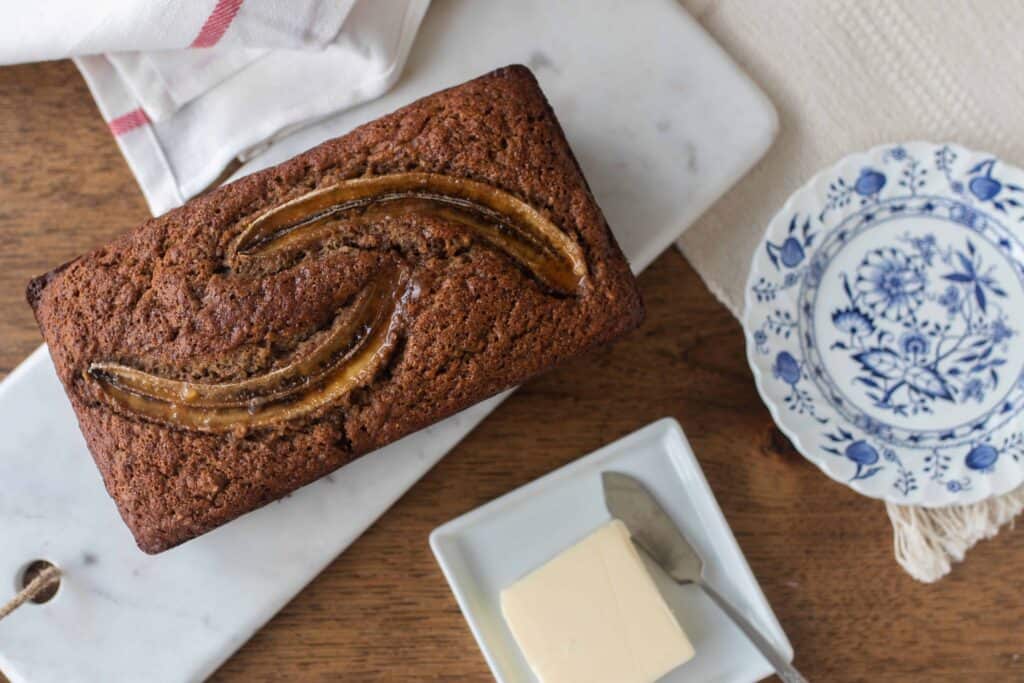
If I had a food love language, I’m sure it would be sourdough. And by this point, you’ve all figured this out.
It’s been a 10-year love affair with this healthy, ancient way of eating grains. Once converted, it is truly hard to go back. Our family is never going back.
Honestly though, sourdough doesn’t have the best reputation. People have a misconception that sourdough is difficult and takes a long time.
You might be imagining yourself spending several hours a day kneading dough, or even hunkered over your bread bowl with your sourdough instructions, trying to troubleshoot your dough like a bad chemist.
That is just not the case. Sourdough has simplified meal making and food prep dramatically for our family.
Converting a recipe is actually quite simple. You may have to tweak it a bit, but it is really worth it. Between the health benefit of easier digestion and the greater depth of flavor, you’ll be thankful you made the switch.
There are multiple factors when considering converting a recipe to sourdough. Consider the type of recipe, how much liquid and flour, and whether or not another leavener may be added.
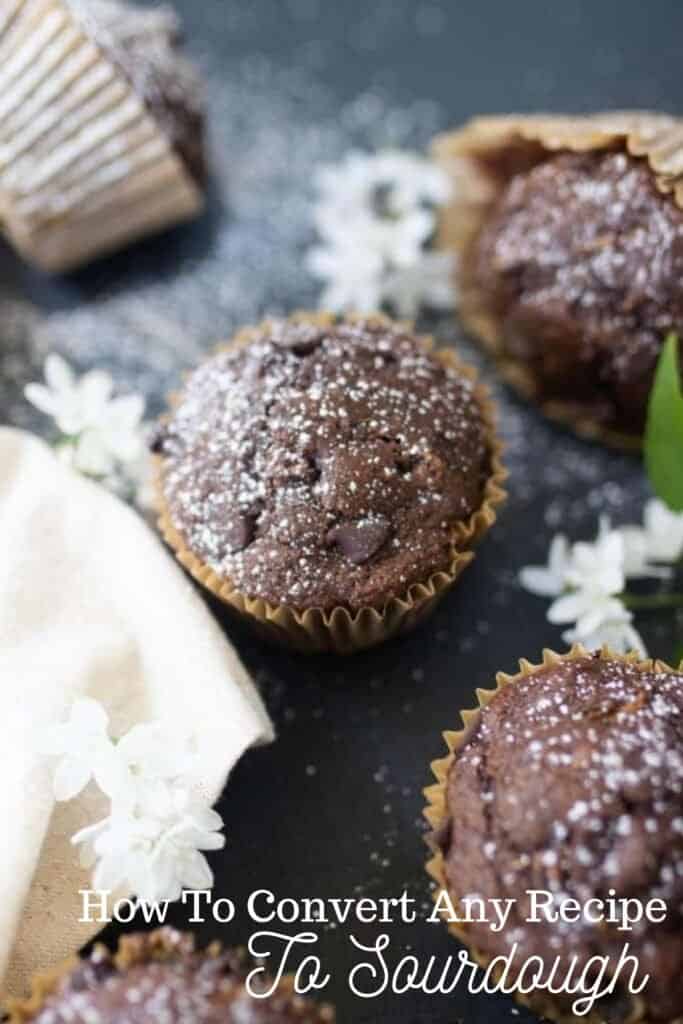
Why would you want to convert a recipe to sourdough?
- Flavor: Sourdough adds a delicious tang and complexity to grain products. From savory to sweet, the dimension added can’t compare with regular wheat products. Once you switch to eating traditionally fermented grains, regular grains seem sub-par and lacking flavor.
- Health: Switching to grains fermented with sourdough starter reduces the amount of phytic acid present in the grains, and allows the nutrients (like folate) to become more bio-available. Your body then can more easily absorb these nutrients.
- Digestibility: Fermented grains actually contain less gluten than unfermented. The good bacteria and yeast help break down the gluten, making it easier for your body to digest. Those who have difficulty digesting grains may be able to tolerate long-fermented sourdough products. Those with celiac disease still should avoid any glutinous grains, even fermented ones.
How To Convert Any Recipe To Sourdough:
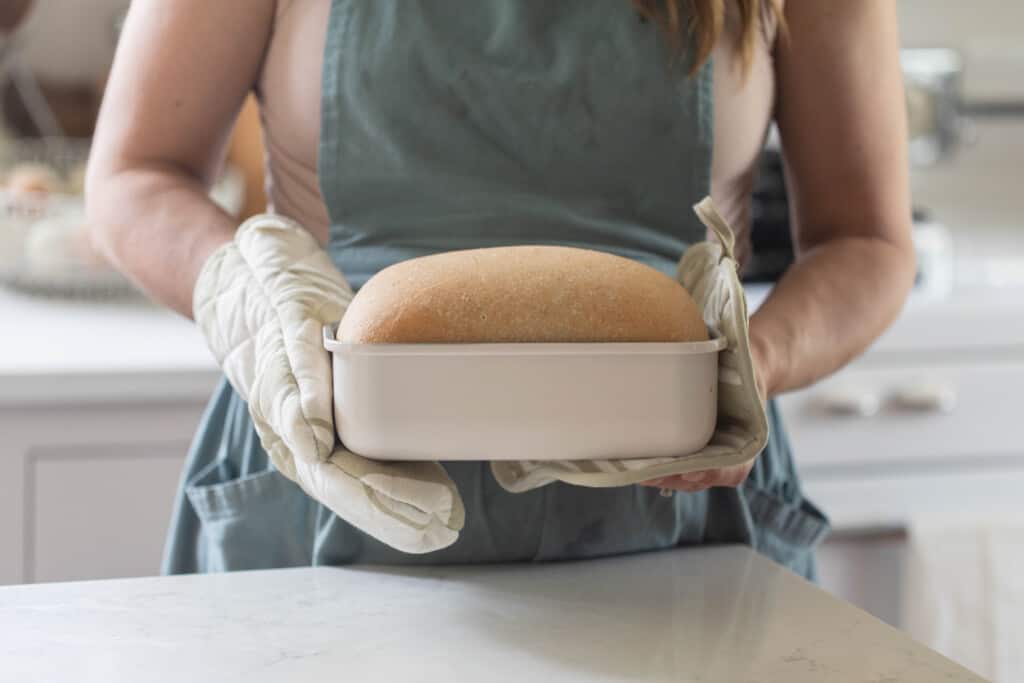
Yeast Recipes:
When I started my sourdough journey, I took the yeast bread recipe I had been using and adjusted to work with sourdough.
So, I know it is possible to take your favorite yeast bread recipe and make it using the wild yeast from sourdough starter instead!
If you’d like to do this with any of your go-to recipes, there are three basic rules I follow.
- Swap out one packet of yeast for a half cup of starter.
- Reduce the liquid by ⅓ cup + one tablespoon and reduce the flour by ⅓ cup + one tablespoon.
- Increase rise time, usually double.
Want to know how I came up with this super scientific recipe conversion? I simply added ⅓ cup + one tablespoon of flour and water to a bowl, and measured it. This combination equals exactly a half cup of “sourdough starter”, so we are simply adding the starter to the recipe and taking the liquid and flour volume back out.
You can use this same process to work with your own conversions for different types of flours and recipes.
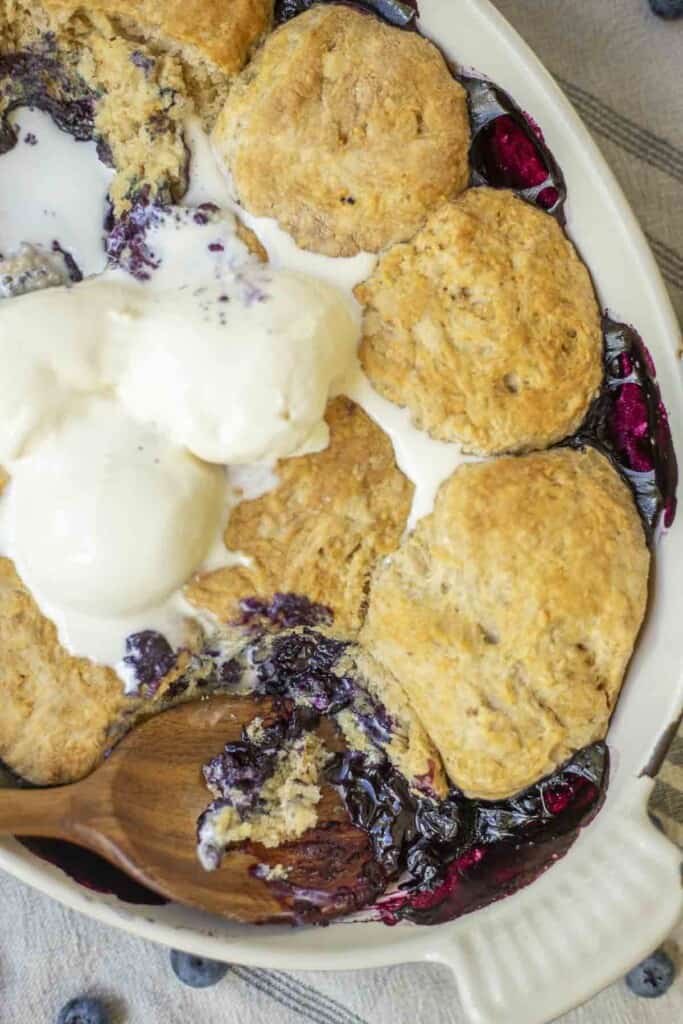
Non-Yeast Recipes:
There are many quick-bread recipes that work well when converted to sourdough, like pancakes, crepes, muffins, and other quick breads (hello, banana bread).
Now this can be a little trickier since many non-yeast recipes (like cookies, quick breads, etc) don’t contain a lot of liquid. For recipes like this, I would suggest adding a half a cup of sourdough starter, and possibly increasing the amount of flour a bit.
I say possibly because you may be able to get away with adding 1/2 cup of starter and not having to do any else differently to the recipe.
For other recipes, you could possibly reduce the amount of oil added while also adding more flour. I would suggest trying 1/3 cup for both.
Honestly, this conversion works best for yeast breads, but can be done with others as well. If all else fails, I have just about every sourdough recipe you could think of on the blog.
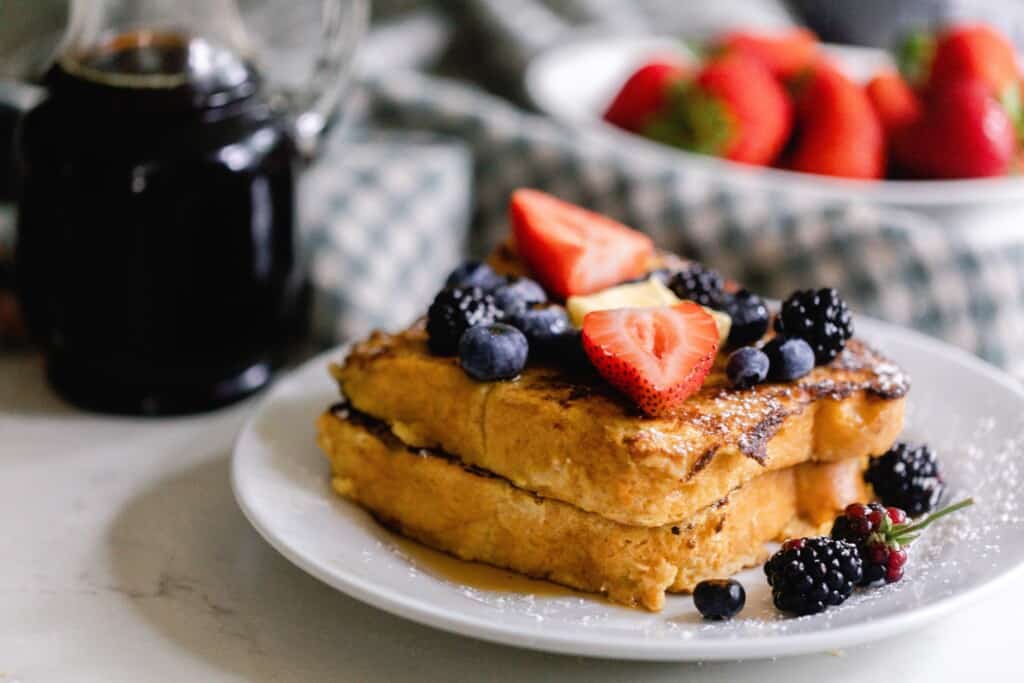
The hydration of your starter matters when making these adjustments!
The conversion example above is based on a sourdough starter fed at 100% hydration. I feed my starter equal parts flour and water.
The amount of flour and water used is based on the amount of starter I already have. But the ratio of flour to water never changes.
If you feed your starter a different ratio of flour to water, your recipes will need to be adjusted accordingly.
You can also use sourdough starter in your quick bread recipes as well!
The basic principle given previously still works here: add starter, reduce flour and water to equal the volume of the starter added. ½ cup starter at 100% hydration = ⅓ cup + one tablespoon of flour and water.
Try Some Of Our Favorite Recipes
- Sourdough Brownies
- Buffalo Cauliflower Wings
- Sourdough Strawberry Cream Cheese Cobbler
- Easy Artisan Bread
- Sourdough Banana Bread
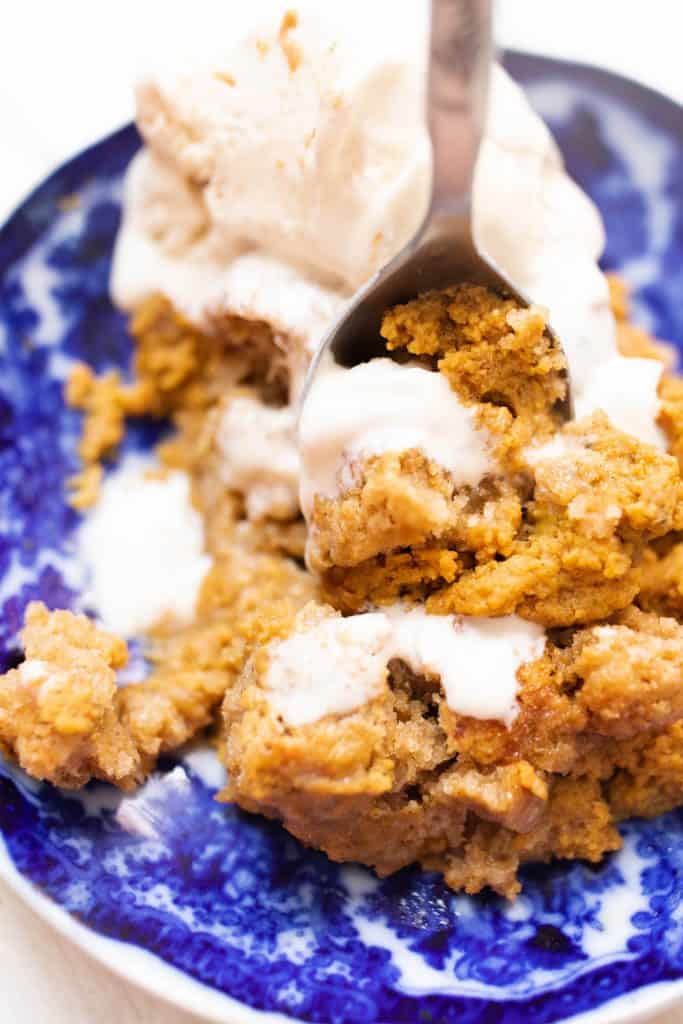
Why does sourdough need a longer rise time?
Typically, rise time will take about double the time, as the natural yeasts and bacteria take more time to develop than commercially developed yeast. While a yeast bread may take 1-2 hours to rise, give your sourdough recipe at least 4 hours.
If you are making a bread recipe, make sure to double both rises. The bulk rise, and the second rise after shaping.
With sourdough, you can even do longer rises in the refrigerator to help develop flavor without over fermenting.
For bread, you would allow a bulk ferment after starting the dough, and then a second ferment in the fridge, covered with plastic, for up to 24 hours.
Differences in rising time will change substantially depending on the type of recipe, if it contains other leaveners like baking soda, the environment it is rising in, etc.
FAQ:
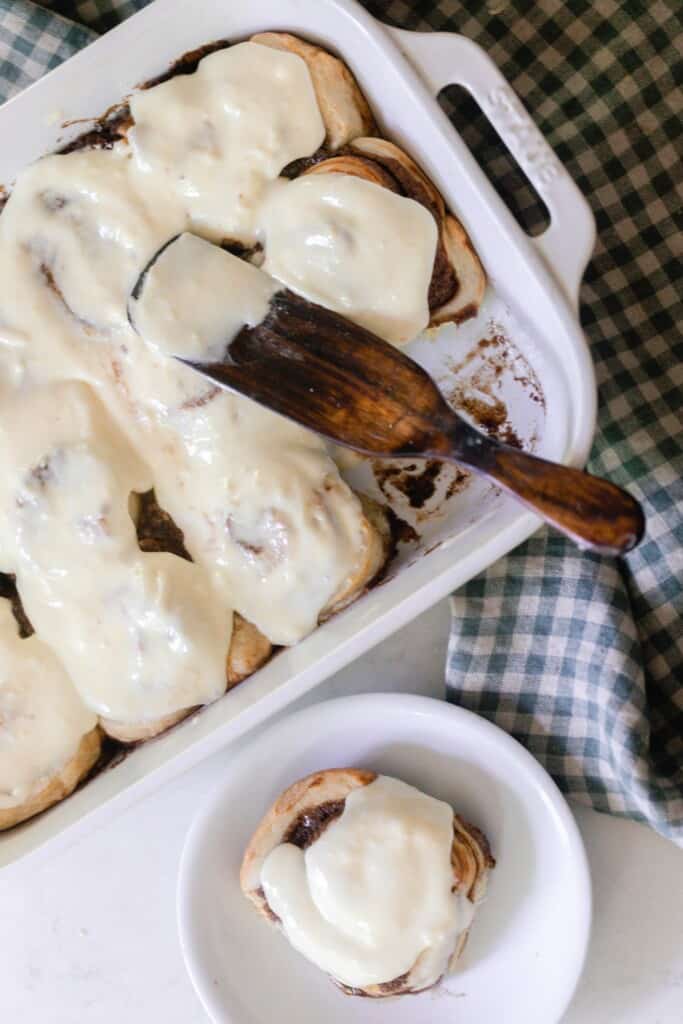
How much sourdough starter equals a packet of yeast?
A packet of yeast roughly equals 1/2 cup of sourdough starter in a recipe.
Is it cheaper to buy or make sourdough?
It is much cheaper to make your own sourdough bread compared to buying it.
What is the ratio of sourdough starter to baking?
While many bakers may choose a different ratio, the most common is one part flour to one part water, to one part sourdough starter (1:1:1)
Sourdough might sound complicated, but most new processes do. Take some time to read and learn about sourdough, give your own starter a try, and I promise, you’ll find it to be a simpler skill than expected.
It’s an incredibly beneficial practice, both for your health, and for the depth of flavors you build into your recipes.










Best blueberry pancakes I ever made with sourdough millet and rye flours. and no belly bloat post meal. Amazing! Im hooked!
My question is in recipes that convert to the sourdough starter, there is no fermentation time. It’s mix and bake. Isn’t the benefit of fermentation lost?
This would depend on the recipe. When converting bread recipes, they will need to ferment a lot more time than with commercial yeast. Typically at least double. For some things like cakes, and quick breads, you can ferment at room temperature (without the added leaveners, and typically I’ll leave out the eggs as well) for 6-24 hours. The next day add the eggs and leaveners and bake. You could just mix and bake, but it wouldn’t have the benefits of the fermentation.
I’ve wondered this. I long ferment your blueberry muffins, but I’ve also long fermented muffin recipes from other bloggers, that you mix everything and then stick in the refrigerator for 24 hours. Why do you leave out the eggs and leavening agents?
I want to be able to long ferment all my muffins and quick breads.
I will typically leave out the eggs and leavening agents for muffins and quick breads for the long ferment and then add them after this is because I will ferment on the counter. Some people don’t feel comfortable leaving eggs out on the counter that long. Adding the leavening agents that long before baking may not give you the light and fluffy results you want. I don’t find 24 hours in the fridge ferments grains very much. So if you are gluten sensitive, that fridge time may not be enough.
I have found a discard recipe that uses 1 cup starter and 3 table spoons of yeast. Would you just not use yeast and still do one cup? Or add another cup of starter? And what if you want honey in the bread? Can you keep it?
I would not use yeast. Normally if the recipe is calling for yeast and starter it is more of a discard recipe. Like this sourdough discard bread: https://www.farmhouseonboone.com/the-easiest-no-knead-sourdough-discard-bread. I personally would try to use active sourdough without the yeast (depending on the recipe of course). Honey is totally fine to keep.
After you have swapped out flour and water for sourdough starter, how do you handle the dough? Stretch and folds every 30 min. for a total of 4 sets, or use a machine and knead for the 8-10 minutes stated on the original recipe?
If the recipe calls for oil and honey should those be removed in order for the sourdough to work? I understand they are part of the wet/water that was removed in your sample recipe.
Thanks for giving us such great recipes and advice! It is hard work and you are doing it while raising a family. Much appreciated.
It would depend on the recipe. I usually like to use the stretch and fold method for bread that has a chewy crumb, and kneading for softer breads. If that makes sense. You would leave all the original ingredients, like the honey and oil. Hope that helps.
Do you have to have an Einkorn starter to make sourdough recipes with Einkorn?
Yep! https://www.farmhouseonboone.com/einkorn-sourdough-starter
Hi Lisa, love your posts.
You make sourdough easy👏
Do you have receipe and/or tips for making sourdough bread in a bread machine?
Thank you. I’m going to be working on a recipe for bread machines really soon! Stay tuned.
Can you make this printable? The numerous pop ups can make it difficult to conceptualize.
Thank you so much for your information!
“The basic principle given previously still works here: add starter, reduce flour by one cup, reduce water by one cup. Except for crepes – that is a different type of recipe, since there is no flour added at all, except what is already in the starter.” So how much starter are you adding to say a muffin or biscuit recipe? A cup?
True. Usually I add at 1/2 cup to 1 cup haha. Not super helpful. In my sourdough biscuits, I use 1 cup, where as muffins I usually use 1/2. With more tweaking you could change that.
I make a French bread in a bread machine, just the dough then I Form it let it rise and take it to the oven..Can I incorporate starter instead of the package yeast? In a bread machine? So appreciate your help as it is one of my family‘s favorite breads.
I am not following your amounts for flour and water. I thought if you added 1 cup of starter you would need to reduce the flour and water by 1/2 cup each, since 1 cup of starter is half flour and half water. Am I missing something?
But what I was looking for is the amount of starter needed. I think what you are saying is to use 1 cup of starter in place of 2 tsp of yeast. Is that right?
Also rising times will need to be longer, maybe double?
I am looking forward to trying this out. Thank you!!
Cari, I noticed that too. She removed 1/2 cup of water and one cup of flour. Then there was the oil and honey. I am left with questions as well.
I agree. I’m confused by these ratios as well. I would love for these ratios to be converted to weight for accuracy and for more explanation as to why those percentages were chosen and why certain items were removed.
Good to know! I’ll make a note of this to update. Thanks!
You’re right. 1 cup of starter is 1/2 cup flour and 1/2 cup water